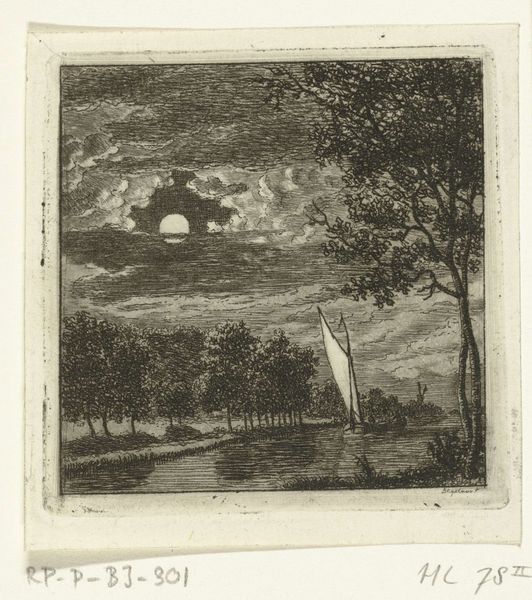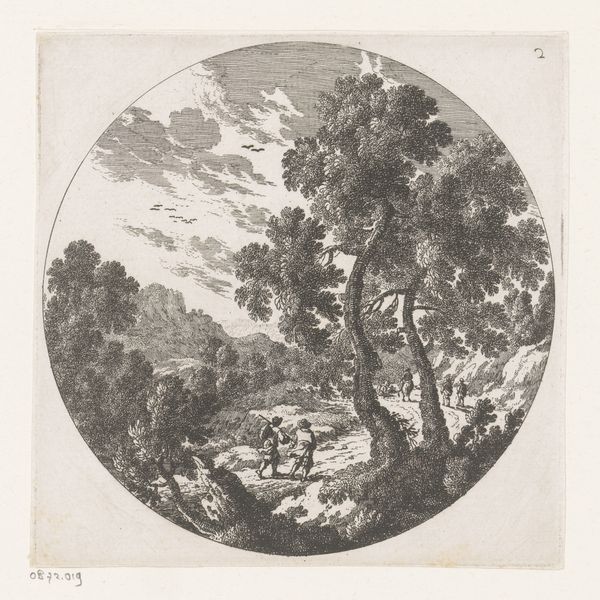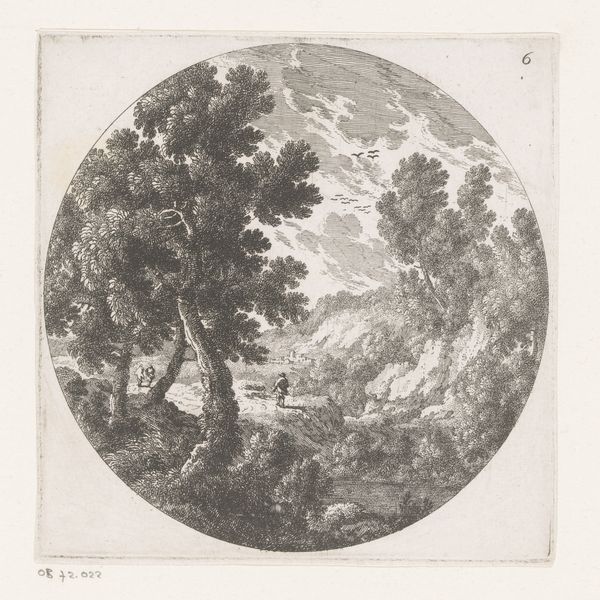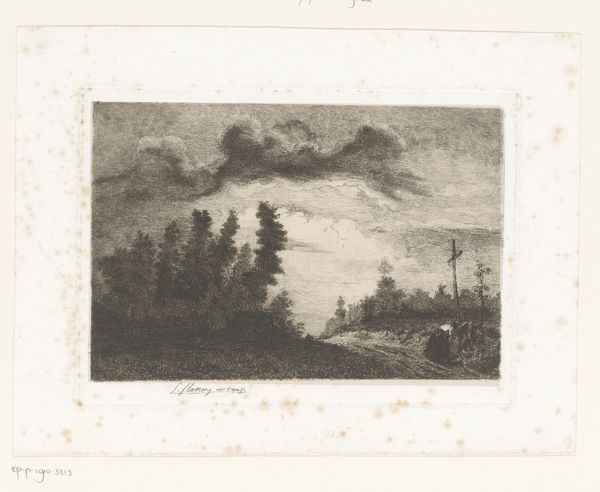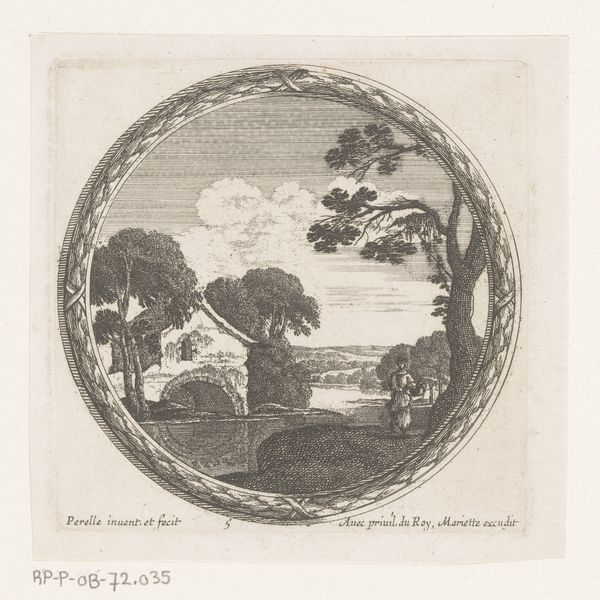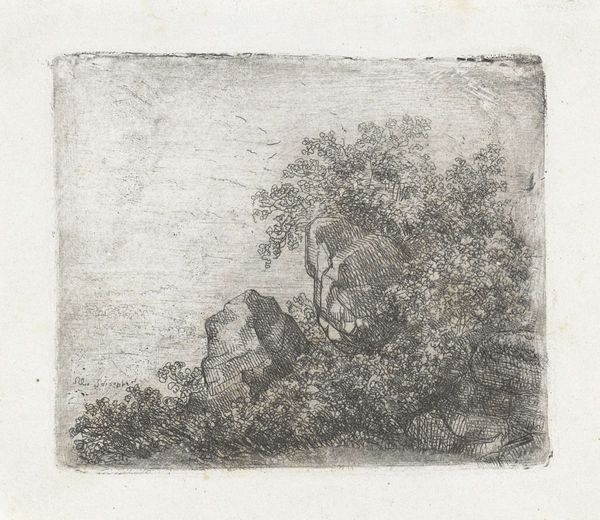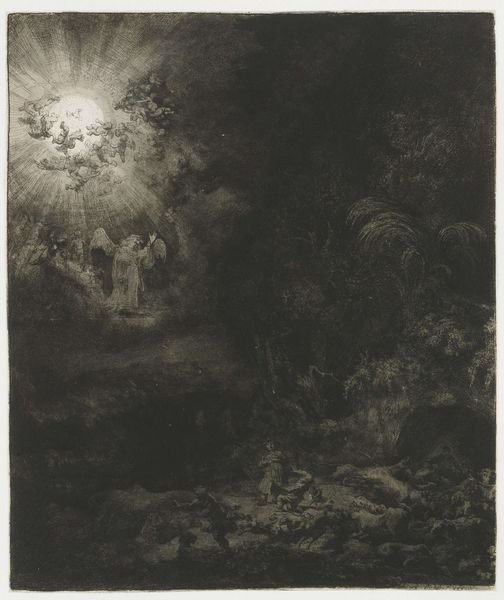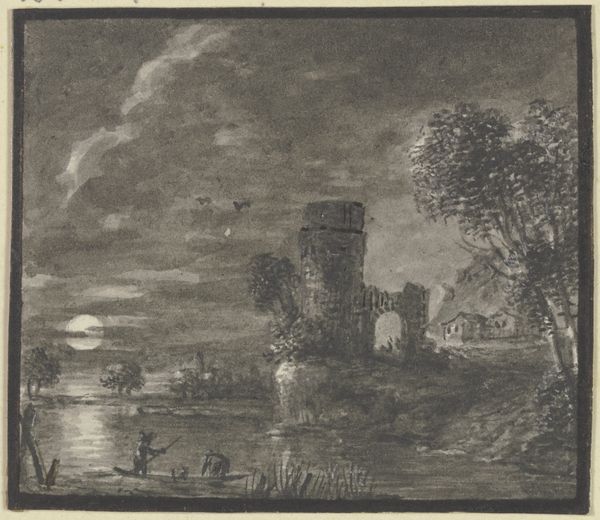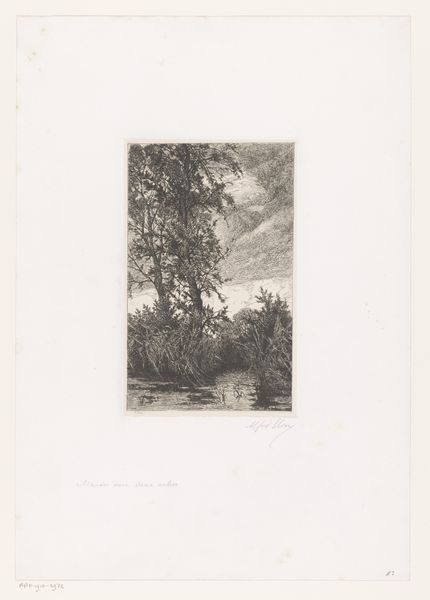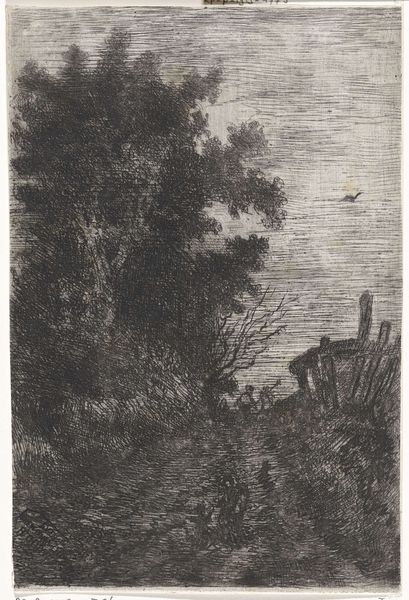
etching
#
etching
#
landscape
#
river
#
realism
Dimensions: height 99 mm, width 87 mm
Copyright: Rijks Museum: Open Domain
Curator: Before us we have Johannes Pieter van Wisselingh’s etching, “Vissers bij maanlicht”, dating from approximately 1830 to 1878. It currently resides here in the Rijksmuseum. Editor: It’s remarkably evocative, a night scene rendered entirely in subtle shades of gray. The moonlight on the water feels almost tangible. Curator: The composition guides the eye. See how the radiating lines above subtly imply depth and celestial movement? The dark foliage frames the focal point beautifully. Editor: Yes, and that framing is vital, isn’t it? Think about the fishermen themselves; what does their labor look like under that specific moonlight? Their activity depends on that reflection, on specific times, temperatures. This makes me curious about the cultural conditions of laborers living in the Dutch countryside in the nineteenth century. Curator: That reading adds a certain richness. But look closely at how the light falls – observe the use of contrast! See how it illuminates the ripples, rendering the reflections almost as solid shapes on the river's surface. Editor: Right, but etching allows for this level of tonal control, does it not? In that time, printing itself was becoming more democratized, less dependent on traditional hierarchies and artisanal guilds. Here the medium becomes integral to the artist’s rendering of nighttime activities. Curator: Of course, but consider the formal tensions. The solid mass of trees, the horizontal reflection… It provides a masterclass in contrasting forms that really invites an introspection. It prompts us to really think deeply about space itself. Editor: Precisely, and it invites us to think of the workers, their relationship with their labor in connection with these forces of the world at play—forces the artist tries to capture. It makes one wonder about the conditions for many other nighttime workers dependent on external phenomena. Curator: Ultimately, Wisselingh’s technique allows us to contemplate the interplay of shadow and illumination that can make the image truly haunting. Editor: It is haunting; yet the artistry reminds me of the daily human exertion on view, particularly how humans rely on both art and nature to persevere.
Comments
No comments
Be the first to comment and join the conversation on the ultimate creative platform.
